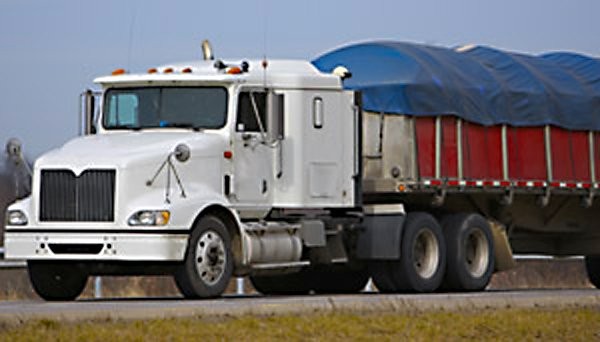Truck tarping: Uncovering the hazards

Health & Safety News – Infrastructure Health & Safety Association (IHSA)
Transporting loads often involves installing tarps to protect them. With loads such as aggregates, you often need tarps to prevent material from flying out of the truck box. In either case, installing these tarps may protect loads, but it presents a number of risks, such as:
• falls from height while installing tarps without proper fall protection equipment
• musculoskeletal disorders (MSDs) from repetitive installation and removal
• slips and trips while working on or around vehicles.
There are several methods for tarping and untarping loads. Manual tarping requires drivers to lift the tarps, lay the tarps out, pull the tarps, attach straps, and climb on loads and trailers. These tasks create hazards related to falls and they’re also physically demanding. They are especially tough on the back and shoulders. The tarps are heavy and awkward, making them difficult to distribute and secure in order to properly cover loads. When the work is outdoors, the tasks can be affected by wind and weather, adding more risk to an already precarious task.
On top of that, if workers have not been properly trained on safe tarping techniques or if the training has not been standardized, workers may employ improper and unsafe techniques to get the job done.
By eliminating some of the hazards associated with tarping, workers will reduce the likelihood of injury. There are a variety of options available including:
• rack and tarp kits
• automatic tarping machines
• soft sides
• sliding or rolling tarps, etc.
If you have to tarp manually, consider the following work method:
• Use lighter and smaller tarps. Covering a load with three smaller tarps, compared to two large tarps, lowers the physical demand of the task.
• Follow-up with policies that restrict loads to safer sizes.
• Instruct new drivers on proper tarping techniques (e.g., where to place and unfold the tarp, how to tuck in the folds, where to connect bungees).
• Purchase detachable ladders with handles or fold-out steps to aid getting on and off trailers.
• Provide help to drivers during tarping
• Provide fall-arrest systems in a dedicated tarping area. For example, there are portable horizontal rail systems that you can move into place near the vehicle to help with the lifting and spreading of the tarps over the load.
• Whenever possible, lift the tarp onto the load using spreader bars and a lift truck or skidsteer, or in some cases an overhead bridge crane.
You must use fall protection if you work at heights while tarping. If a worker must work at heights, they must be trained in the proper techniques and use of fall-protection equipment in order to do so safely.
This type of work causes a lot of injuries in the industry. By following these procedures you can reduce your risks and know you are tarping safely.
Company info
5110 Creekbank Road, Suite 400
Mississauga, ON
CA, L4W 0A1
Website:
healthandsafetyontario.ca

